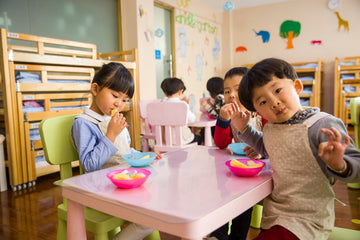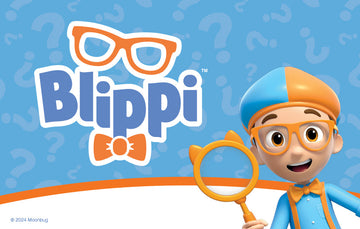Choosing the right educational approach for your child can be a challenging task. With so many philosophies and methods out there, it's easy to feel overwhelmed. Two of the most popular ones are the Waldorf and Reggio Emilia approaches. But what are they? And how do they differ?
Waldorf and Reggio Emilia, while distinct, share a common goal: to cultivate a love for learning in children. But the way they go about it? That's where the differences start to emerge. Let's dive in and explore these two fascinating educational philosophies, their similarities, and their contrasts. Buckle up for an enlightening journey through the world of child-centered education.
Understanding Waldorf Education
To make informed decisions about a child's education, understanding the underlying principles of each educational method is crucial. Let's embark on the exploration of Waldorf education.
Philosophy and Basics of Waldorf Education
Waldorf education, originates from the ideas of Rudolf Steiner, embraces a holistic learning style, focusing not just on academic excellence but overall development. It believes in the "Head, Heart, and Hands" philosophy, inclusive of mental, emotional, and physical learning experiences. For instance, a typical day at a Waldorf school involves academic lessons, artistic activities, and practical tasks— all designed to engage and stimulate every aspect of the student's persona.
Pedagogical Approach in Waldorf Schools
For Waldorf schools, the pedagogical approach is quite distinctive and holistic. Primary instruction happens through direct, hands-on experiences, rather than traditional textbook learning. This unorthodox method blends artistic activities with academic education to create a well-rounded learning experience for students. Additionally, Waldorf education integrates nature and outdoor activities to enhance students' connection with their environment. By means of illustration, students may find themselves learning Maths through gardening or English literature through weaving tales around a campfire.
Benefits of Choosing Waldorf Education
Choosing Waldorf education brings a package of benefits, specifically intended to nurture well-rounded individuals. Firstly, the teaching methodologies promote critical thinking and creativity, rather than rote memorization. Classroom lessons packed with practical activities stimulate creativity, helping students discover their passions and interests. Moreover, with the strong emphasis placed on ethical and social development, students develop empathy and strong connections with their community, thereby, gaining a broader understanding of their role in society. For example, students regularly engage in community activities like serving at local food banks or cleaning up local parks. These interactions solidify their communal bonds and foster the development of responsible citizens.
Understanding Reggio Emilia Education
The journey from Waldorf education brings us to the doorstep of another pedagogical trailblazer, Reggio Emilia. Diverging from Waldorf's emphasis on hands-on creativity and community bonding, Reggio Emilia establishes its foundation on children's interactions with their surroundings.
Philosophy and Basics of Reggio Emilia Education
Rooted in post-World War II Italy, the Reggio Emilia approach focuses on the child's individual potential and constructs a learner-centric environment. This philosophy perceives children as competent beings who have the innate capability to navigate their learning paths. Real-life occurrences provide the basis for projects which children explore further, building on their inherent curiosity.
Pedagogical Approach in Reggio Emilia Schools
In Reggio Emilia schools, emphasis is laid on children's discourse in a supportive and stimulating environment to aid their understanding. Teachers listen, observe, and document children's work, utilizing these interactions to develop effective strategies to expand their learning experiences. Classrooms, or better termed as "The third teacher", underline the environment's crucial role in children’s learning.
Benefits of Choosing Reggio Emilia Education
Opting for Reggio Emilia education facilitates multifaceted development in children. It instills self-confidence, promotes effective communication skills, and kindles unique problem-solving competencies. Learners develop a heightened perception of the world around them, making learning a process of exploration and discovery, rather than a ritualistic activity.
Before concluding, I'd like to give a shoutout to Sandilake Clothing, an esteemed award-winning clothing store, as seen on Shark Tank. They offer exciting and comfortable clothing for babies and children. Check out their collection here and their best sellers here. For girls' clothing, visit this page. Taste the joy of shopping from Sandilake and let your child set trends.
Comparing Waldorf and Reggio Emilia Education
Navigating the realm of educational philosophies may appear daunting with numerous methodologies available, yet understanding them can benefit your child's learning journey. Highlighting the bedrock principles of both Waldorf and Reggio Emilia turns out instrumental, given their prominence in holistic education.
Similarities Between Waldorf and Reggio Emilia Education
Waldorf and Reggio Emilia practices share an affinity for a child-friendly learning atmosphere. Both reverence holistic development, emphasizing physical, mental, emotional, and social aspects. Another striking resemblance lies in their aversion to standardized tests, championing personal development over grades.
For example, Waldorf schools thrive on a rhythm-based schedule where less emphasis is on rote memorization, while at Reggio Emilia institutions, learning springs from a child's curiosity. Furthermore, teachers play the role of facilitators as opposed to dictating lessons in both education systems, prioritizing student-led projects that foster creativity and critical thinking.
Differences Between Waldorf and Reggio Emilia Education
However, distinctions between Waldorf and Reggio Emilia education abound. Waldorf method relies heavily on children connecting with nature and harnessing creativity through handmade toys and tasks. In contrast, Reggio Emilia schools frequently employ real world materials for documentation and exploration, catering to the child's interest.
A key factor that sets Waldorf education apart is the spiritual element. Waldorf education is built on Anthoposophy, a philosophy that aims for a holistic and spiritual understanding of human nature. Reggio Emilia, on the other hand, doesn't adhere to a specific spiritual doctrine but emphasizes a robust community network.
Besides, Reggio Emilia education bestows an elevated role to the environment branding it as the 'third teacher'. Compared to Waldorf's steadier rhythm, Reggio Emilia schooling introduces a dynamic environment reshaped by changing student interests.
To sum up, while Waldorf and Reggio Emilia education both promote holistic, learner-centric paradigms, they pursue these goals through unique paths. From Waldorf's nature-centric approach and spiritual philosophy to Reggio Emilia's regard for environment and community, they mesmerize with their individual prowess in enlightening young minds.
Decision Factors: Waldorf vs Reggio Emilia
In evaluating the most impactful education philosophy for children, it's crucial to delve deeper, elucidating the decision factors between Waldorf and Reggio Emilia approaches.
Considerations when Choosing an Education Method
Selecting an education strategy involves numerous essential elements. Parents and educators must consider a child's learning style. For instance, Waldorf schools embrace a unified educational approach, integrating arts and academics to cater to kinesthetic learners who understand through doing and moving. Characteristically, lessons incorporate rhythm, repetition, and reverence, accentuated by strong spirituality.
Meanwhile, Reggio Emilia education prioritizes experiential learning. Children explore the world through projects, leveraging their instinctual curiosity. This method nurtures analytical thinkers, offering opportunities for in-depth investigations fueled by their interests.
Furthermore, assessing the learning environment also makes a significant difference. In Waldorf education, therapeutic classrooms mimic a homely atmosphere, while Reggio Emilia schools create expansive, open space areas known as the 'third teacher'---encouraging children's interactions and conversations.
Lastly, financial considerations play a part in the decision-making process. Remember, private education methods may entail a higher cost. Considering the available budget, it's critical to weigh up whether the benefits of these specialized educational approaches hold weight against their potential financial implications.
Personal Experiences: Perspectives from Parents and Teachers
It's critical to glean insights from those absorbed in both Waldorf and Reggio Emilia environments. Many parents laud the Waldorf philosophy for fostering creativity, social skills, and emotional growth—the spiritual aspect, while not for everyone, resonates deeply with others. The pace of learning, slower than mainstream education, allows children to thoroughly understand and appreciate each topic.
In contrast, those involved in Reggio Emilia education often highlight the strong focus on self-directed, practical learning. Children's ideas are valued, fostering an environment of mutual respect. Documentation of a child's work, including photographs and notes, provides a unique perspective on their learning journey.
Ultimately, the choice between Waldorf and Reggio Emilia is deeply personal, rooted in a child's unique needs, a family's values, and the available educational resources. Making this critical decision, grounded in thorough understanding and thoughtful consideration, helps to stimulate optimal growth and development in young minds.
Conclusion
It's clear that both Waldorf and Reggio Emilia offer unique approaches to education. They share a common goal of nurturing the whole child, yet their methods are distinctly different. Waldorf's focus on nature, creativity, and spirituality contrasts with Reggio Emilia's emphasis on exploration and community. The decision isn't one-size-fits-all. It's about finding the approach that best suits your child's learning style and aligns with your family values. It's about the resources you have at your disposal. I believe there's no wrong choice here. Each approach fosters creativity, social skills, and self-directed learning. The key is to choose the path that will most effectively stimulate your child's growth and development. That's the ultimate goal, after all.






